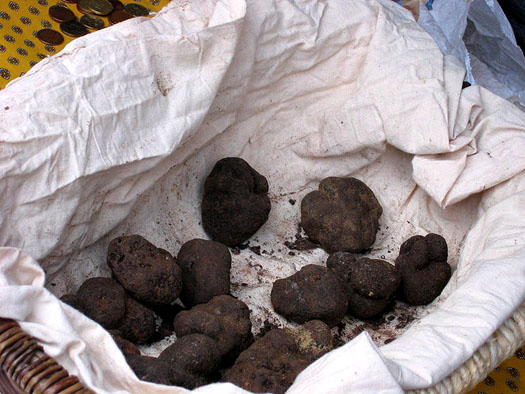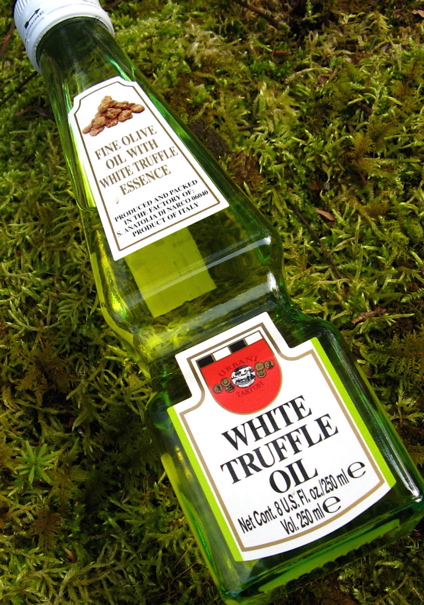So you want to be a truffle-farmer…? (Part 2)
In part one, you traveled to France to pursue your dream of establishing a truffle farm. After several months traveling the country, you have realized that truffle-farming, especially in Southern France, is serious business, and you decide your entrée into the truffle industry would be greatly aided by a better understanding of the history of this distinguished fungus.
As an integral part of French economy and cuisine, the truffle is firmly entrenched in French culture and society. A source of national pride, the “Black Pearl of Pé rigord” (T. melanosporum) is the variety chiefly cultivated throughout France (8).

Although French attempts at truffle cultivation date back to the Renaissance, successful and commercial cultivation of the Black Pearl of Pé rigord did not arise till the early 1800s. Joseph Talon, a French peasant, receives credit for the first active cultivation of truffles when in 1810, this industrious fellow planted some acorns on his small plot of land. He found, several years later, that truffles had grown in the organic soil layer around his young oak trees. A shrewd and enterprising young man, Talon began purchasing “worthless” land on the cheap, and planting it with seedlings grown under the original 1810 trees. Over the years, he amassed a veritable plantation of oak trees and truffles, and was able to make a profit of his thrifty investment. Talon divulged his knowledge of trufficulture later in his life, and his cousin, a man by the name of Rousseau, is credited with sending the first lot of cultivated truffles to Paris for sale in 1855. The arrival of truffles for sale in commercial quantities, along with Rousseau’s publicity of Talon’s methods for truffle-growing, sparked a flurry of interest and research as curious minds promoted truffle-cultivation as an industry (8).
Today, growers often still use acorns and oak (or hazelnut) seedlings to establish truffle plantations. After 3-5 years of cultivation, you should begin to see bare regions around the trees where grass has died due to fungal growth in the soil (6,8). This phenomenon, the brûlé , is probably a result of allelopathic compounds secreted by the fungus. At this point, further decisions on plantation management must be made. Two methods of cultivation have emerged over the years, which capture the two extremes of modern truffle management.
The Tanguy method is often favored by those with smaller budgets and who prefer a less-intensive management strategy more closely resembling truffle growing under wild conditions. Growers use mowing for weed control, but eschew other management strategies such as fertilization, soil aeration via plowing, and intensive irrigation. Truffles generally take a few years longer to produce a harvest under these conditions, but the approach limits drastic alteration of the original environment (6).
The Pallier method is more management-intensive, as farmers control weeds and promote soil aeration by tilling or harrowing in the early spring and summer. Trees are also pruned to allow maximum sunlight to reach the soil and the developing fungi, and irrigation maintains adequate soil moisture levels. While such strategies may promote higher yields and give the grower more control of the environment, a risk remains of damaging roots and soil with tilling and excess irrigation. This could lead to reduced truffle yield and might support the invasion of competitive mycorrhizal fungi (6).

Depending on your choice of management, you can begin to look for truffles after 7-15 years of cultivation. For Périgord black truffles, harvest occurs from mid/late winter through May. The annual arrival of truffles in French markets is much-anticipated and widely-publicized at famous markets such as those at Richerenches in Provence, said to be the largest in Europe (1).
Truffle production in France reached its peak near the end of the 19th century, with a reported yield of ~2200 tons of fresh truffles in 1890 (3). Political disorder and geographical disruption resulting from World Wars I and II caused a sharp decline in truffle yields. While the industry has regained its solid footing in the following decades, current production levels are still far below their peak at the turn of the last century (4).
Today, truffle cultivators and those who harvest from the wild face a new threat in the form of global warming. You discover that even these fungi, for all their laudable qualities, are not immune to climate change. Because of droughts in France during the past five years, truffle production has dropped significantly. In 2005, France reported only ~37 tons of truffles, much less than previous decades (5).
Tuber melanosporum also faces competition in the form of several Chinese truffle species, most notably T. sinensis and T. himalayensis. These two species strongly resemble the color and shape of the Black Pearl of Périgord, so much so that it is difficult to distinguish between species without a trained eye (2).
In light of shortages and rising prices, an even more blatant impostor has emerged in the form of truffle oil. Mounting a challenge to T. melanosporum‘s share of the market, this oil does not even usually contain any truffles; rather, it receives its pungent odor from a chemical compound (primarily the sulfide 2,4-dithiapentane). While many chefs and food critics decry this oil as an inferior substitute for the real truffle (which has a more complex odor profile), the laws of supply and demand appear to overrule these purists’ objections, and the relatively inexpensive oil has carved a niche of its own (7).
Your time in France has increased both your knowledge of the truffle industry and its place in French culture and society, as well as your fascination with this fungus. Despite the current challenges, you feel that the persistence of the truffle in its purest form remains an integral part of French society, and believe the market for truffles will persist even in the face of current challenges.
- Collins, Russ. “Truffle Markets”. ProvenceBeyond–French Riviera Themes. Accessed online 12/3/07: http://www.beyond.fr/themes/trufflemarkets.html
- Fabricant, Florence. “The Invasion of the Chinese Truffle.” New York Times. Feb. 15, 1995. Acessed online 12/2/07: http://query.nytimes.com/gst/fullpage.html?res=990CE5DE153AF936A25751C0A963958260&fta=y
- Freedman, Louise. Wild About Mushrooms: the Mycological Society of San Francisco Cookbook. The Mycological Society of San Francisco, 2000. Published online: http://www.mykoweb.com/cookbook/index.html.
- Hinsley, E. and Davis, J.M. “Black Truffles (T. melanosporum).” Department of Horticultural Science, North Carolina Cooperative Extension, North Carolina State University. Accessed online 12/3/07: http://www.cals.ncsu.edu/specialty_crops/pdf/truffle.pdf
- Moore, Molly. “On the Prowl in Provence with the Truffle Enforcer.” The Washington Post. December 18, 2006. Page A14.
- “New World Truffieres.” New World Truffieres, Inc. Accessed online 12/2/07: http://www.truffletree.com/index.html.
- Patterson, Daniel. “Hocus-Pocus, and a Beaker of Truffles.” New York Times. May 16, 2007. Accessed online 12/2/07: http://www.nytimes.com/2007/05/16/dining/16truf.html?_r=1&oref=slogin
- Singer, Rolf. 1961. Mushrooms and Truffles. Leonard Hill Books Ltd. London.
Truffle image kindly provided by Poppy via Wikimedia Commons; the truffle oil image is Kathie’s, and so is the oil itself (try a few drops on eggs, says she).


Great post! I’ve never tasted a truffle, or even the oil; I wonder if there are any truffle-relatives in the Midwest. David Arora wrote of some analogous species on the West Coast in his book Mushrooms Demystified.